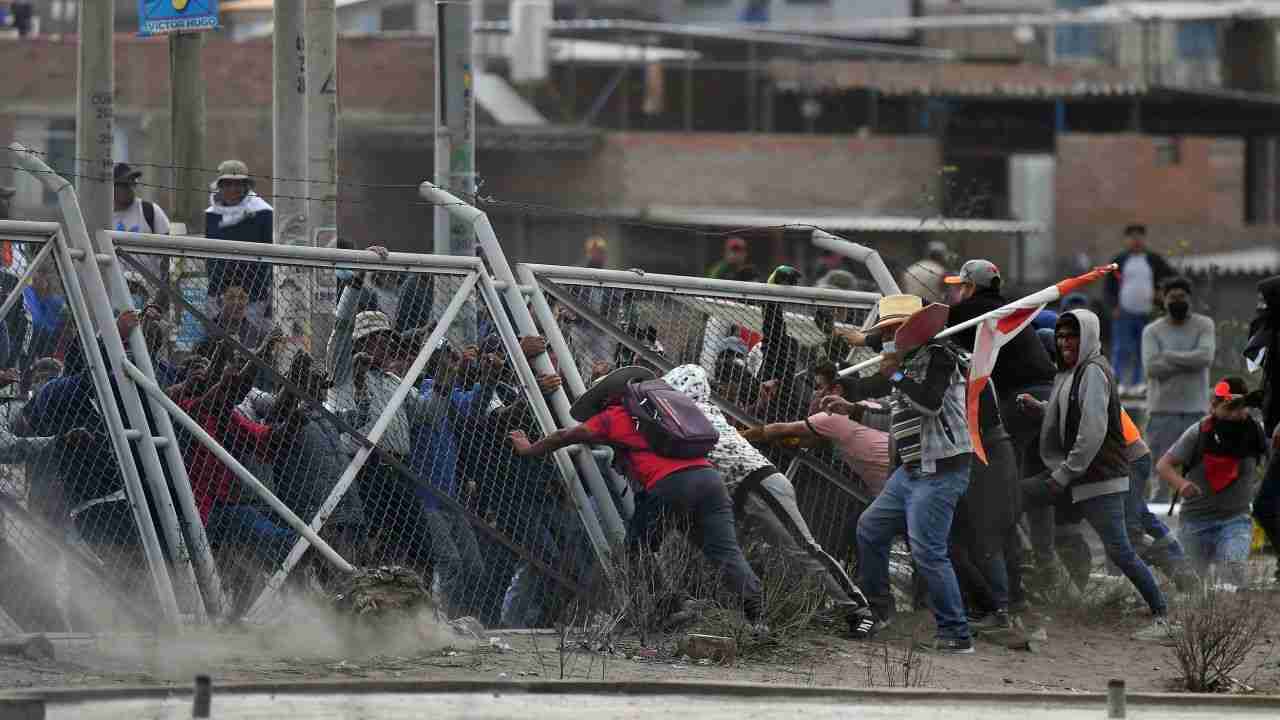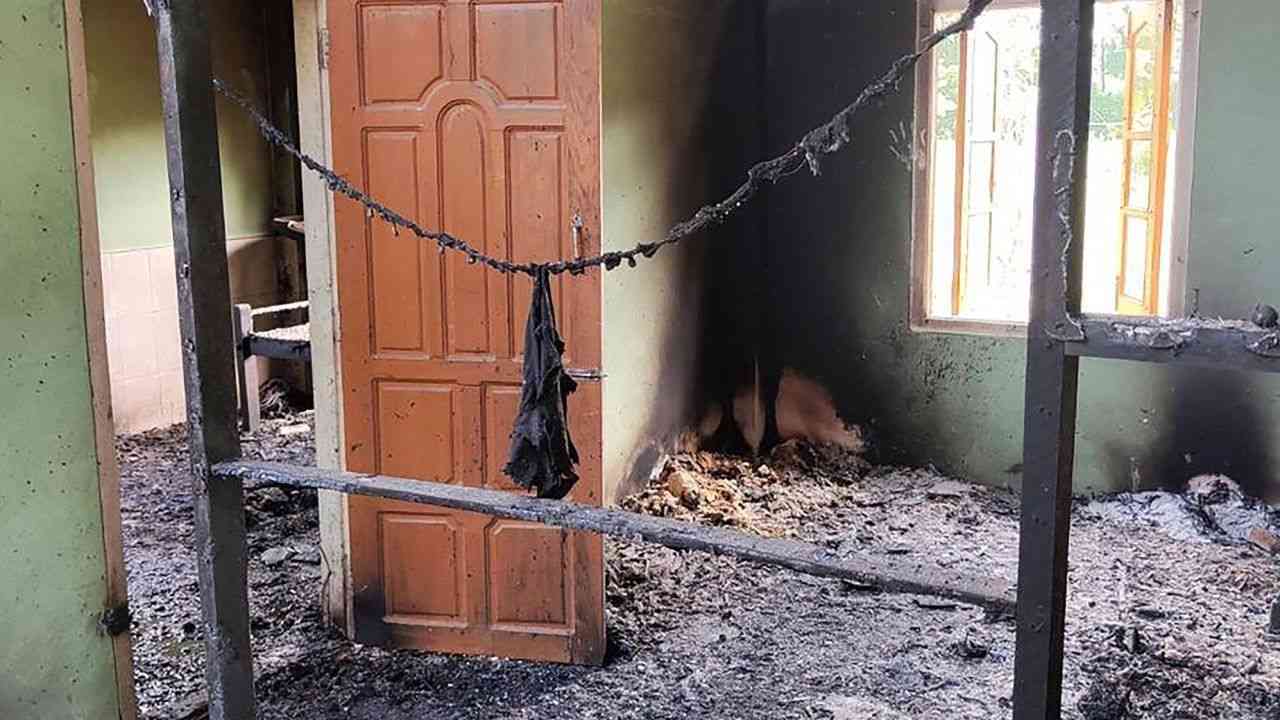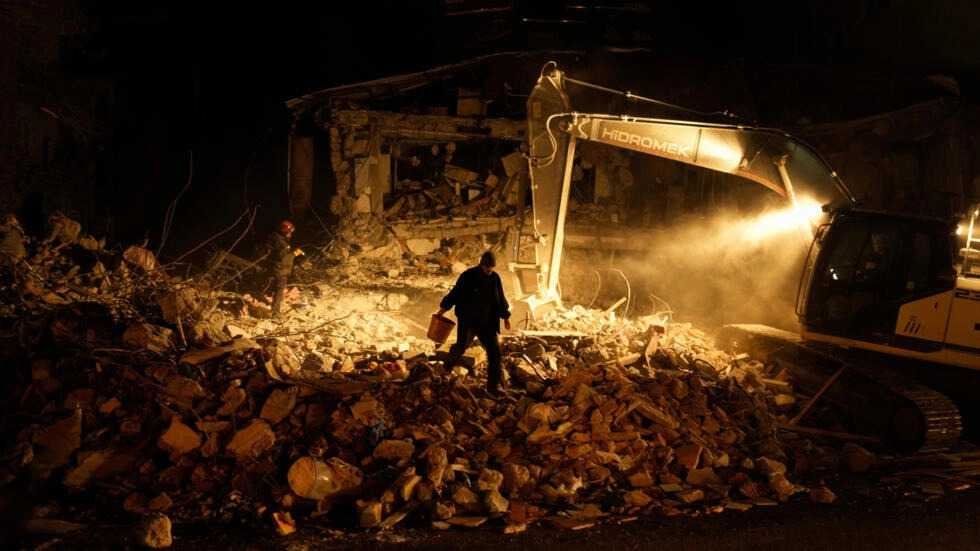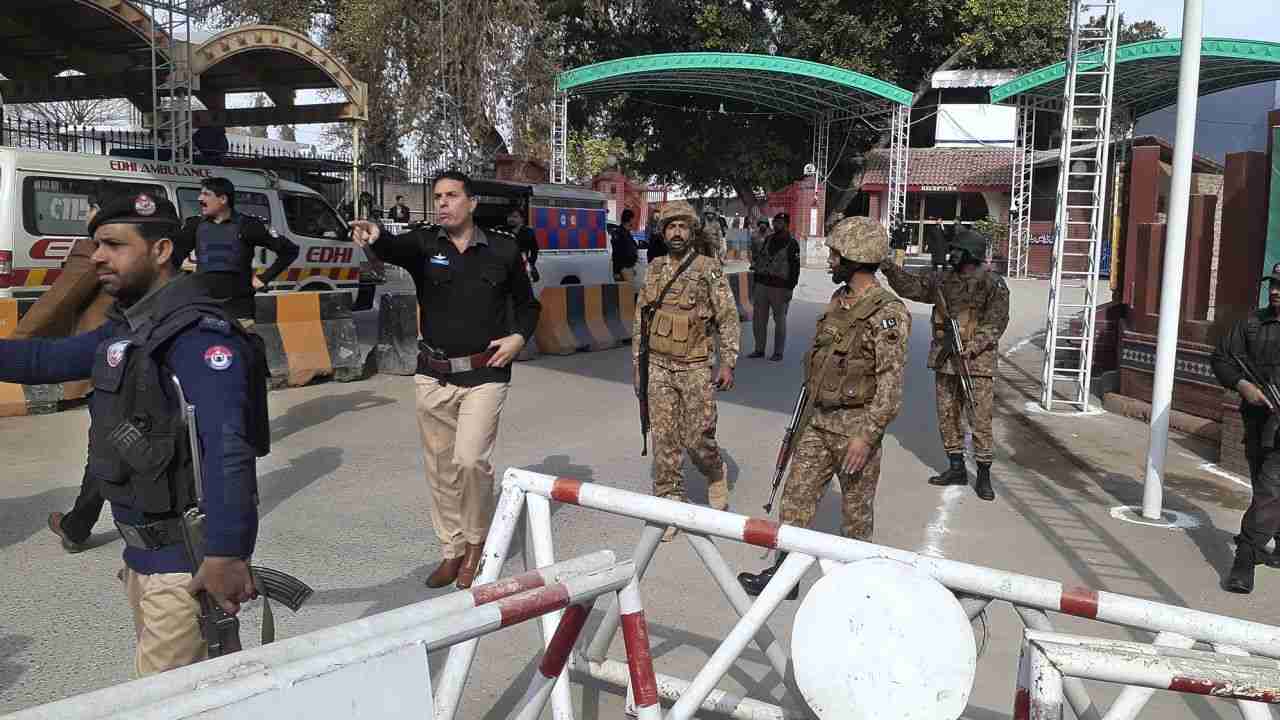Peru’s President Dina Boluarte has called for dialogue after clashes between protesters and police during nationwide demonstrations left one person dead and 30 injured.
“Once again, I call for dialogue, I call on those political leaders to calm down. Have a more honest and objective look at the country; let’s talk,” Boluarte said at a press conference on Thursday evening.
Her comments came after clashes on the streets of the capital Lima, where thousands of protesters from across the country faced a massive show of force by local police.
State broadcaster TV Peru showed a group of protesters breaking through a security cordon and advancing onto Abancay Ave, near Congress. In the video, protesters can be seen throwing objects and pushing security agents.
Police forces were also seen unleashing tear gas on some demonstrators in the center of the city.
Ad Feedback
Fire destroyed a historic building in the center of Lima Thursday night. At least 25 fire trucks and dozens of firefighters worked on putting out the fire, TV Peru reported.
Boluarte said 22 members of Peru’s National Police and 16 civilians had been injured and damage reported at airports in Cuzco and Puno, as well as Arequipa.
“All the law will fall on those people who are committing these criminal acts of vandalism, that we are not going to allow it again,” Boluarte said.
She also expressed solidarity with members of the press who had been attacked.
“That’s not a peaceful protest march, the acts of violence generated throughout these days of December and now in January will not go unpunished,” Boluarte said.
Even if “the state says that we are criminals, terrorists, we are not,” protester Daniel Mamani said.
“We are workers, the ordinary population of the day to day that work, the state oppresses us, they all need to get out, they are useless.”
“Right now the political situation merits a change of representatives, of government, of the executive and the legislature. That is the immediate thing. Because there are other deeper issues – inflation, lack of employment, poverty, malnutrition and other historical issues that have not been addressed,” another protester named Carlos, who is a sociologist from the Universidad San Marcos, told CNNEE on Wednesday.
‘A climate of more violence’
The Andean country’s weeks-long protest movement – which seeks a complete reset of the government – was sparked by the ouster of former President Pedro Castillo in December and fueled by deep dissatisfaction over living conditions and inequality in the country.
Demonstrators’ fury has also grown with the rising death toll: At least 54 people have been killed amid clashes with security forces since the unrest began, and a further 772, including security officials, have been injured, the national Ombudsman’s office said earlier on Thursday.
Peruvian authorities have been accused of using excessive force against protesters, including firearms, in recent weeks. Police have countered that their tactics match international standards.
Autopsies on 17 dead civilians, killed during protests in the city of Juliaca on January 9, found wounds caused by firearm projectiles, the city’s head of legal medicine told CNN en Español. A police officer was burned to death by “unknown subjects” days later, police said.
Jo-Marie Burt, a senior fellow at the Washington Office on Latin America, told CNN that what happened in Juliaca in early January represented “the highest civilian death toll in the country since Peru’s return to democracy” in 2000.
A fact-finding mission to Peru by the the Inter-American Commission of Human Rights (IACHR) also found that gunshot wounds were found in the heads and upper bodies of victims, Edgar Stuardo Ralón, the commission’s vice-president, said Wednesday.
Ralon described a broader “deterioration of public debate” over the demonstrations in Peru, with protesters labeled as “terrorists” and indigenous people referred to by derogatory terms.
Such language could generate “a climate of more violence,” he warned.
Peruvian officials have not made public details about those killed in the unrest. However, experts say that Indigenous protestors are suffering the greatest bloodshed.
“The victims are overwhelmingly indigenous people from rural Peru,” Burt said.
“The protests have been centered in central and southern Peru, heavily indigenous parts of the country, these are regions that have been historically marginalized and excluded from political, economical, and social life of the nation.”
Why are protesters so angry?
Protesters want new elections, the resignation of Boluarte, a change to the constitution and the release of Castillo, who is currently in pre-trial detention.
At the core of the crisis are demands for better living conditions that have gone unfulfilled in the two decades since democratic rule was restored in the country.
While Peru’s economy has boomed in the last decade, many have not reaped its gains, with experts noting chronic deficiencies in security, justice, education, and other basic services in the country.
Peru’s legislative body is also viewed with skepticism by the public. The president and members of Congress are not allowed to have consecutive terms, according to Peruvian law, and critics have noted their lack of political experience.
A poll published September 2022 by IEP showed 84% of Peruvians disapproved of Congress’s performance. Lawmakers are perceived not only as pursuing their own interests in Congress, but are also associated with corrupt practices.
The country’s frustrations have been reflected in its years-long revolving door presidency. Current president Boluarte is the sixth head of state in less than five years.
Joel Hernández García, a commissioner for IACHR, told CNN what was needed to fix the crisis was political dialogue, police reform, and reparations for those killed in the protests.
“The police forces have to revisit their protocol. In order to resort to non-lethal force under the principles of legality, necessity, and proportionality and as a matter of last resort,” Hernández García said.



